A Definitive Look at All Foo Fighters Studio Albums
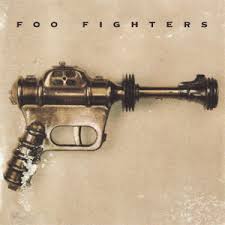
A Definitive Look at All Foo Fighters Studio Albums
Foo Fighters studio albums span nearly three decades of rock evolution, delivering everything from raw garage energy to polished arena anthems. As of now, the band has released 11 studio albums, starting with their self-titled debut in 1995. Their latest release, But Here We Are (2023), reflects both personal loss and musical growth. Longtime fans often name The Colour and the Shape, Wasting Light, There Is Nothing Left to Lose, and But Here We Are as the best Foo Fighters albums, thanks to their impact, songwriting, and emotional depth. The hit single "Everlong" appears on The Colour and the Shape, one of their most beloved records. Foo Fighters have won multiple Grammy Awards for Best Rock Album, including for One by One, Wasting Light, and Medicine at Midnight. Drummer Taylor Hawkins played on every album from The Colour and the Shape onward. Whether you're new or a lifelong fan, there's plenty to explore in the Foo Fighters studio albums catalog.
1. Foo Fighters (1995)

Foo Fighters released their debut album on July 4, 1995, just one year after Nirvana’s end. Dave Grohl recorded the entire album himself, playing every instrument and writing all the songs. This raw, DIY project introduced the world to a new post-grunge sound. While Foo Fighters started as a solo project, the debut laid the foundation for future band-driven releases.
Key singles include "This Is a Call," "Big Me," and "I'll Stick Around." Critics praised its energy and melodic hooks, especially considering Grohl’s transition from drummer to frontman. Although this album didn't win major awards, it established Foo Fighters as more than a one-off side project.
Deeper tracks like "Alone + Easy Target" and "Exhausted" continue to attract fan attention. The album helped define the sound of late '90s rock, blending heavy riffs with strong melodies. Among Foo Fighters studio albums, this one remains unique due to its solo origins and underground feel. Still, it launched a legacy that would shape modern rock. Today, fans view it as an essential starting point in the evolution of Foo Fighters studio albums.
2. The Colour and the Shape (1997)
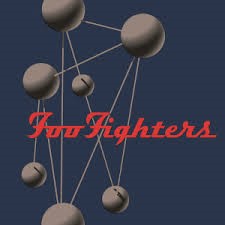
Released on May 20, 1997, The Colour and the Shape became a massive breakthrough for Foo Fighters. It introduced a full-band sound and featured Taylor Hawkins on drums for future tours, although Grohl played drums on the album itself. Personal themes, especially Grohl’s divorce, shaped its emotional tone.
The album features major singles like "Everlong," "Monkey Wrench," and "My Hero." Critics praised its dynamic range and melodic songwriting, solidifying the band’s place in modern rock. Many fans consider it one of the best Foo Fighters studio albums. It didn’t win a Grammy but reached triple platinum status in the U.S.
Beyond the singles, songs like "February Stars" and "New Way Home" show emotional depth and musical variety. The album balanced loud, aggressive tracks with quiet introspection. Among Foo Fighters studio albums, this release defined their signature blend of power and vulnerability. It continues to draw praise as a fan favorite and live set staple.
3. There Is Nothing Left to Lose (1999)
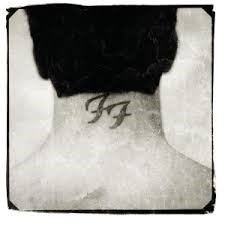
Released on November 2, 1999, There Is Nothing Left to Lose marked a shift to a more melodic and relaxed sound. Recorded as a trio in a home studio, the album reflected a sense of creative freedom and personal reinvention. It was the first Foo Fighters album to feature Taylor Hawkins on drums throughout.
Key singles include "Learn to Fly," "Breakout," and "Next Year." The album won the Grammy for Best Rock Album, marking the band’s first major industry recognition. Critics noted its smooth production and emotional clarity.
Fans often highlight deeper tracks like "Aurora" and "Headwires" as underrated gems. Among all Foo Fighters studio albums, this one shows the band’s ability to blend catchy hooks with lyrical honesty. It set the tone for their future success by balancing accessibility with substance. There Is Nothing Left to Lose remains a go-to recommendation when introducing people to Foo Fighters studio albums.
4. One by One (2002)
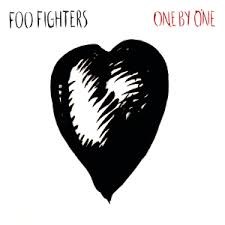
Foo Fighters released One by One on October 22, 2002, after a troubled recording process nearly led to a breakup. The band re-recorded the album in just a few weeks, resulting in a rawer, more urgent sound. This record marked a return to heavier rock after the mellower tone of their previous release.
Major singles include "All My Life" and "Times Like These." Critics praised the energy and aggression of the lead single, and the album won the Grammy for Best Rock Album. Commercially, it debuted at No. 3 on the Billboard 200 and achieved platinum status in several countries.
Deep cuts like "Come Back" and "Halo" often resonate with long-time fans. Among Foo Fighters studio albums, One by One stands out for its intensity and emotional grit. Despite internal tension during its creation, it helped the band evolve. It remains one of the essential Foo Fighters studio albums for understanding their resilience and drive.
5. In Your Honor (2005)
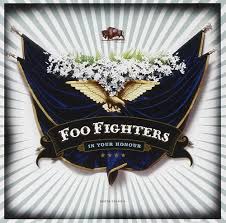
Released on June 14, 2005, In Your Honor is a double album that split Foo Fighters' sound into two distinct sides—hard rock and acoustic. The project reflected a more ambitious approach, allowing the band to experiment with dynamics and tone. It was recorded in their newly built Studio 606.
Notable singles include "Best of You," "DOA," and "Miracle." While it didn’t win a Grammy, the album received multiple nominations and marked a commercial high point for the band. Critics appreciated its scale, though some viewed the dual format as uneven.
Tracks like "Cold Day in the Sun" and "Still" gained traction with fans seeking deeper material. In the landscape of Foo Fighters studio albums, In Your Honor demonstrates their versatility and willingness to expand beyond their core sound. It often serves as a turning point in discussions about the evolution of Foo Fighters studio albums.
6. Echoes, Silence, Patience & Grace (2007)
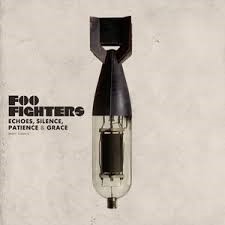
Foo Fighters released Echoes, Silence, Patience & Grace on September 25, 2007. The album combined the hard rock of earlier records with the softer elements explored in In Your Honor. It also reunited the band with producer Gil Norton, who worked on The Colour and the Shape.
Key singles include "The Pretender," "Long Road to Ruin," and "Let It Die." The album debuted at No. 1 in several countries and won the Grammy for Best Rock Album. Critics praised its variety and songwriting depth, calling it one of the band’s most complete efforts.
Fan favorites like "Stranger Things Have Happened" and "Home" reveal its emotional core. Among Foo Fighters studio albums, this one bridges past and future, showing growth without losing power. Its blend of intensity and introspection helped solidify its status. Many consider it a highlight in the ongoing evolution of Foo Fighters studio albums.
7. Wasting Light (2011)
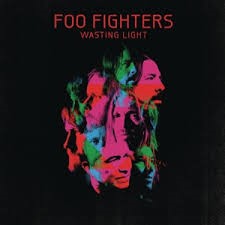
Released on April 12, 2011, Wasting Light marked a return to analog recording and a rawer sound. The band recorded the album in Dave Grohl’s garage with producer Butch Vig, creating a direct, no-frills rock experience that emphasized authenticity.
Top singles include "Rope," "Walk," and "These Days." Critics and fans praised the album’s energy and consistency. It won the Grammy for Best Rock Album and several other awards, becoming one of the most critically acclaimed Foo Fighters studio albums.
Tracks like "Arlandria" and "I Should Have Known" reveal emotional layers and tight songwriting. Grohl addressed personal themes, including loss and identity, giving the album depth beyond its aggressive tone. Wasting Light revitalized the band’s reputation and introduced them to a new generation. Among Foo Fighters studio albums, it remains a career-defining highlight and a frequent pick in “best of” lists.
8. Sonic Highways (2014)
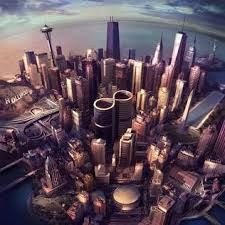
Foo Fighters released Sonic Highways on November 10, 2014, alongside an HBO documentary series. Each track was recorded in a different U.S. city, using local studios and influences to shape the sound. This concept album reflected Grohl’s love of American music history.
Key singles include "Something from Nothing," "The Feast and the Famine," and "Congregation." The album received mixed reviews from critics, who appreciated the concept more than the execution. Still, it earned Grammy nominations and debuted strongly on international charts.
Fan-favorite deeper tracks include "Subterranean" and "I Am a River," which explore mood and ambiance. Among Foo Fighters studio albums, Sonic Highways stands out for its storytelling ambition and production scale. Though opinions vary, its cultural value and documentary tie-in give it a unique place in the Foo Fighters studio albums lineup.
9. Concrete and Gold (2017)

Released on September 15, 2017, Concrete and Gold saw Foo Fighters collaborate with pop producer Greg Kurstin. The album blends heavy guitars with lush vocal layers and unexpected harmonies, offering one of their most sonically rich experiences.
Singles like "Run," "The Sky Is a Neighborhood," and "The Line" received strong airplay. The album debuted at No. 1 on the Billboard 200 and received praise for mixing grit with grandeur. Though not a Grammy winner, it earned nominations and strengthened the band’s mainstream appeal.
Deeper cuts like "Dirty Water" and "Sunday Rain" show their range and willingness to experiment. Concrete and Gold holds a distinct spot among Foo Fighters studio albums due to its fusion of rock and pop textures. The album reflects a confident band willing to evolve while staying true to their roots. It keeps listeners engaged with layered production and anthemic energy, enriching the landscape of Foo Fighters studio albums.
10. Medicine at Midnight (2021)
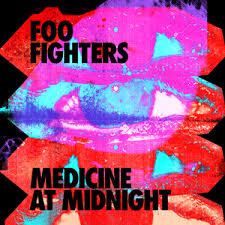
oo Fighters released Medicine at Midnight on February 5, 2021, during the COVID-19 pandemic. The album takes a turn toward dance-rock and groove-based rhythms, offering a fresh take on their sound. It introduced a more upbeat, experimental side while still staying grounded in rock.
Top singles include "Shame Shame," "Waiting on a War," and "No Son of Mine." The album won the Grammy for Best Rock Album in 2022. Critics noted its shift in tone and praised the band’s willingness to try new approaches.
Fan-favorite tracks like "Love Dies Young" and "Chasing Birds" highlight its melodic side. Among all Foo Fighters studio albums, Medicine at Midnight stands out for its willingness to break formula. While it divided opinion, it added variety to the band’s discography. It remains a vital chapter in the broader story of Foo Fighters studio albums, showing that innovation still plays a role in their longevity.
11. But Here We Are (2023)
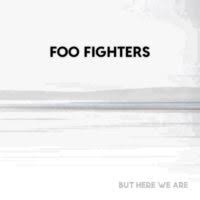
Released on June 2, 2023, But Here We Are is the band’s first album after the deaths of Taylor Hawkins and Dave Grohl’s mother, Virginia. This emotionally charged record explores grief, healing, and resilience. The band described it as both brutally honest and sonically powerful.
Singles include "Rescue Me," "Under You," and "The Teacher." Critics widely praised the album’s vulnerability and cathartic strength. It debuted high on global charts and reconnected with fans on a deeply personal level. While awards are still pending, many consider it among the best recent Foo Fighters studio albums.
Fan-loved tracks like "Hearing Voices" and "Beyond Me" add emotional depth. As a comeback, it highlights the band’s strength through loss and change. But Here We Are earned praise as a powerful late-career statement. Among all Foo Fighters studio albums, it may be the most personal, showing how grief can reshape and strengthen art.
Foo Fighters studio albums continue to reflect the band’s evolution, resilience, and ability to connect with audiences across generations. From their raw 1995 debut to the emotional depth of But Here We Are, each album brings a unique chapter in the band’s journey. Whether you’re revisiting fan favorites or exploring deeper cuts, there’s something timeless about how these records blend energy, melody, and honesty. For longtime fans and new listeners alike, Foo Fighters studio albums offer a consistent and rewarding catalogue. As the band continues to grow and adapt, their discography remains a benchmark in modern rock.
Recent Posts
Queen studio albums: A Review
Phil Collins Albums Ranked & Reviewed – Complete Guide to Every Studio Album
The best of Massive Attack
Let’s Make Magic
Book Your Event DJ Now




